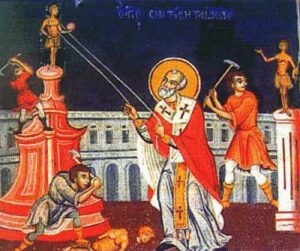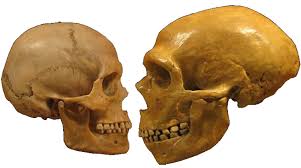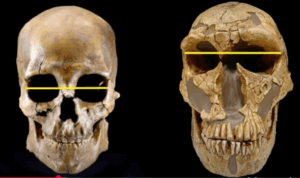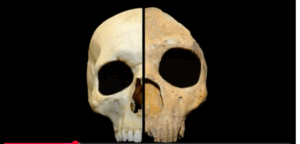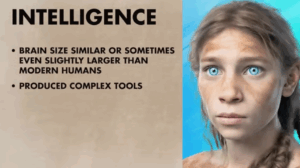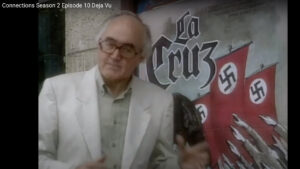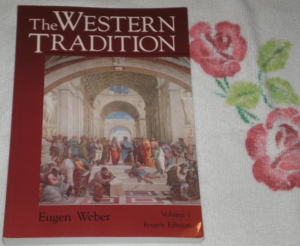years later (I)
The long task of drying my wet books has given me the opportunity to reread some texts that greatly influenced my thinking. In particular, I want to revisit the writings that introduced me to white nationalism in September 2009. I believe quoting and analysing these texts will help clarify how my views were shaped, especially given that, before encountering white nationalism, I had no exposure to such ideas due to their suppression by the System.
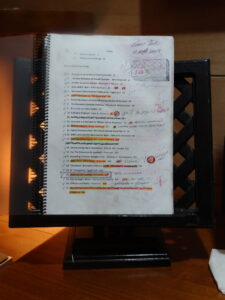 At the time, I was living in Spain. The first author I read who critically spoke about forbidden topics, such as blacks and feminism, was a Jew who had converted to Christianity and was still alive in 2009: Larry Auster. At that time, I knew nothing about the Jewish Question and was fascinated by what Auster wrote on his website View From the Right. I will be quoting from my printouts in the order in which I placed the articles from 2009 in the binder (pic left), whose pages, incidentally, are still damp. Today, I will have to put them back in the sun to continue drying.
At the time, I was living in Spain. The first author I read who critically spoke about forbidden topics, such as blacks and feminism, was a Jew who had converted to Christianity and was still alive in 2009: Larry Auster. At that time, I knew nothing about the Jewish Question and was fascinated by what Auster wrote on his website View From the Right. I will be quoting from my printouts in the order in which I placed the articles from 2009 in the binder (pic left), whose pages, incidentally, are still damp. Today, I will have to put them back in the sun to continue drying.
So let’s quote some passages from what Auster said at a conference in Baltimore in February 2009 (emphasis mine):
To deal with the crisis facing our civilization, we must be both realistic and imaginative. The realism part consists in recognizing how bad our situation is.
The entire Western world is at present under the grip of the modern liberal ideology that targets every normal and familiar aspect of human life, and our entire historical way of being as a society.
The key to this liberal ideology is the belief in tolerance or non-discrimination as the ruling principle of society, the principle to which all other principles must yield. We see this belief at work in every area of modern life.
The principle of non-discrimination must, if followed consistently, destroy every human society and institution. A society that cannot discriminate between itself and other societies will go out of existence, just as an elm tree that cannot discriminate between itself and a linden tree must go out of existence. To be, we must be able to say that we are us, which means that we are different from others. If we are not allowed to distinguish between ourselves and Muslims, if we must open ourselves to everyone and everything in the world that is different from us, and if the more different and threatening the Other is, the more we must open ourselves to it, then we go out of existence.
This liberal principle of destruction is utterly simple and radically extreme. Yet very, very few people, even self-described hard-line conservatives, are aware of this principle and the hold it has over our society. Instead of opposing non-discrimination, they oppose multiculturalism and political correctness. But let’s say that we got rid of multiculturalism and political correctness. Would that end Muslim immigration? No. Multiculturalism is not the source of Muslim immigration. The source of it is our belief that we must not discriminate against other people on the basis of their culture, their ethnicity, their nationality, their religion. This is the idea of the 1965 Immigration Act, which was the idea of the 1964 Civil Rights Act applied to all of humanity: all discrimination is wrong, period. No one in today’s society, including conservatives, feels comfortable identifying this utterly simple idea, because that would mean opposing it.
To see how powerful the belief in non-discrimination is, consider this: Prior to World War II, would any Western country have considered admitting significant numbers of Muslim immigrants? Of course not; it would have been out of the question. The West had a concrete identity. It saw itself as white and in large part as Christian, and there was still active in the Western mind the knowledge that Islam was our historic adversary, as it has been for a thousand years, and radically alien. But today, the very notion of stopping Muslim immigration is out of the question, it can’t even be thought.
What would have been inconceivable 70 or 80 years ago is unquestionable today. A society that 70 years ago wouldn’t have dreamed of admitting large numbers of Muslims, today doesn’t dream of reducing, let alone stopping, the immigration of Muslims. Even the most impassioned anti-Islamic Cassandras never question—indeed they never even mention—the immigration of Muslims, or say it should be reduced or stopped.
You don’t need to know any more than what I’ve just said. The rule of non-discrimination, in all its destructive potentialities, is shown in this amazing fact, that the writers and activists who constantly cry that Islam as a mortal danger to our society will not say that we ought to stop or even reduce Muslim immigration. Such is the liberal belief which says that the most morally wrong thing is for people to have a critical view of a foreign group, to want to exclude that group or keep it out.
The dilemma suggests the solution. What is now unthinkable, must become thinkable; what is now unsayable, must become sayable; and ultimately it must replace non-discrimination as the ruling belief in society. I know that this sounds crazy, utterly impossible. But fifty or a hundred years ago it would have seemed crazy, utterly impossible, that today’s liberalism with its suicidal ideology would have replaced the traditional attitudes that were then prevalent. If society could change that radically in one direction, toward suicidal liberalism, it can change back again. It’s not impossible.
In the same way, modern liberalism says that it is evil to believe that some people are more unlike us than others, because that would also be a violation of the liberal principle that all people are equally like us. The equality principle of modern liberalism says that unassimilable immigrants must be permitted to flood our society, changing its very nature.
This is the ubiquitous yet unacknowledged horror of modern liberalism, that it takes the ordinary, differentiated nature of the world, which all human beings have always recognized, and makes it impossible for people to discuss it, because under liberalism anyone who notes these distinctions and says that they matter has done an evil thing and must be banished from society, or at least be barred from a mainstream career.
This liberalism is the most radical and destructive ideology that has ever been, and yet it is not questioned. Communism and big government liberalism were challenged and fought in the past. But the ideology of non-discrimination, which came about after World War II, has never been resisted—it has never even been identified, even though it is everywhere. What is needed, if the West is to survive, is a pro-Western civilization movement that criticizes, resists, and reverses this totalistic liberal belief system that controls our world.
There are several observations I can make now, reflecting on these texts after sixteen years. With greater maturity, I can identify key ideas that I missed at the time, which are central to my current understanding.
Auster observes that liberalism, which poses a threat to the West’s ethnic survival, emerged after World War II. However, he avoids the argument that England’s war declaration on Hitler was wrong (future quotes from the binder don’t come from ethnic Jews like Auster).
Another thing that comes to mind is that, behind Auster’s principle of non-discrimination, we encounter what I quoted the day before yesterday. I am referring to Robert Barnes: “Slavery abolition was on the clock the moment the American Revolution went forward. Because once you say, ‘All men are created equal’, sooner or later all men have to be treated equal”.
Bingo! Those who heard Barnes’ audiovisual words that I linked to in that post will have heard that the principle of non-discrimination is due to Christian ethics, secularised by the Founding Fathers (or as we should call them, the Founding Cucks). In Barnes’ words, “What they [the Founding Fathers] meant by a Christian nation was the ideal that we are all equal, and that we get that equality from [the Judeo-Christian] God, that gave us all souls. That was a revolutionary break”. Indeed, and as Tom Holland wrote in Dominion, “[Benjamin] Franklin, like the revolution for which he was such an effective spokesman, illustrated a truth pregnant with implications for the future: that the surest way to promote Christian teachings as universal was to portray them as deriving from anything other than Christianity” (emphasis added).
Naturally, Auster, the Jew who converted to Christianity, didn’t go so far as to blame his adopted religion as the ultimate cause of the principle of non-discrimination that currently surrounds us like water surrounds a fish.
Piers Morgan (pure Boomer) vs. Nick Fuentes (radical Zoomer): the interview is a surgical X-ray of the generation gap. These guys speak completely incomprehensible languages and are driven by entirely opposing ideas.

